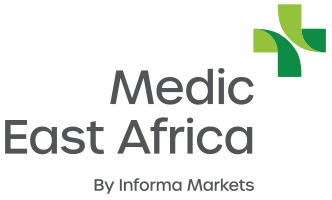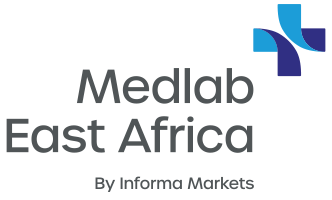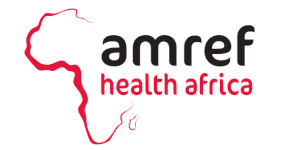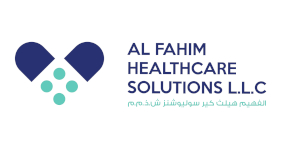Global burden of disease and its implication for health policy design
By Prof Morgan Chetty, Visiting Prof, Health Sciences, DUT, Chairman, IPAF, CEO, KwaZulu Natal Doctors Healthcare Coalition (KZNDHC).
The World Health Organization (WHO) and the Institute of Health Metrics and Evaluation (IHME), recently signed a memorandum of understanding between the two organizations that would increase awareness and understanding of health problems globally as well as the evaluation of strategies to address them.
The Global Burden of Disease (GBD) report, in 2017, presented results described in seven scientific papers. The results covered mortality and life expectancy, causes of death and years of healthy life lost, years lived with disability, overall burden of disease, risk factors and the chances of each nation meeting 41 of the health-related indicators that are part of the United Nations Sustainable Development Goals (SDGs) for 2030.
The work done by WHO and IHME, and the GBD report offers a platform through which “strategies and progress can be tested and analysed”.
It is imperative that all healthcare professionals have a broad understanding of the world’s healthcare challenges, and the work done to demonstrate the areas that need international agencies, health officials and other stakeholders, to prioritise resources and optimise activities. The monitoring of the GBD will help us refocus or intensify our efforts to meet the SDGs by 2030.
Healthcare challenges are greater than the “bubble” we as health professionals operate within. We need to see the world out there and then broaden our vision on the challenges beyond our borders. This information will make us more effective and responsible healthcare professionals. It will also help us change the way we evaluate health of our patients and the challenges in our country and how small changes will benefit a population, a country and the world we live in.
Analysis of Sustainable Development GoalsA look at the findings on the SDGs – [IHME report]
1. Highest scores for availability of healthcare workers – physicians, nurses, midwives and pharmacists were in Cuba and many European Countries – lowest scores were in Sub-Saharan Africa.
2. Most nations have a 95 per cent likelihood of meeting SDGs targets for malaria incidence, as well as these for deaths of children under age 5, neonatal mortality and maternal mortality.
3. Most nations fail to reach their targets for reducing death from non-communicable diseases, such as diabetes or stroke or from suicide.
4. No nation has yet met the SDG target for overweight children, which is at or less than 0.5 per cent of children ages 2 and 4 years.
5. Males are more likely than females to die from non-communicable diseases and smoking, amongst other health problems.
6. Rates for male suicide far exceed rates of females (13.8 per 100 000 as compared to 4.0 per 100 000)
7. It is unlikely the goal of eliminating new HIV infections will be met. HIV remains a massive Public Health threat, particularly because global financing has plateaued. The debate is how best to galvanise accelerated action against HIV.
From the work done by the IHME, I will quote some of the leading causes of death and health risk factors. The finding of the study is that “each of the following caused more than 1 million deaths Worldwide in 2017”. This includes ischaemic heart disease, neonatal disorders, stroke, lower respiratory infections, diarrhoea, head injuries and chronic obstructive pulmonary disease (COPD).
In addition, there has been a rapid increase in death rates for which antibiotics use or resistance is a major factor such as tuberculosis and cellulitis. Murray of IHME stated and I quote “an unintended consequence of increased access to healthcare globally is the dramatic increases in mortality from diseases and disorders linked to pharmaceuticals, specifically antibiotic resistance and opioid use”. He further noted that “over the past decade, deaths from opioid use disorders globally increased by more than 75 per cent from 61,859 in 2007 to 109,520 in 2017”.
When health loss is measured and reported in disability adjusted life years (DALYs) due to other risk factors, many of the common diseases, such as high blood pressure and smoking have changed little in rankings of the top 15 between 2007 and 2017. These factors are also prevalent in South Africa and are a major cause of NCDs.
Ranking of risk factors based on all ages including DALYs:
Increases:
- High blood pressure in 1990 ranked fifth, in 2017 it was first
- Smoking in 1990 ranked fourth, in 2017 it was second
- High blood sugar in 1990 ranked 11th, in 2017 it was third
High body mass index in 1990 ranked 16th, in 2017 it was fourth
Decreases:
- Unsafe water source in 1990 ranked sixth, in 2017 it was 14th
- Household pollution in 1990 ranked seventh, in 2017 it was 16th
- Unsafe sanitation in 1990 ranked ninth, in 2017 it was 20th
“The world has seen several health success stories,” Murray said. “Investments made in poor countries addressing prenatal care and water and sanitation problems clearly have made a significant difference in people’s lives. Conversely, the combination of increasing metabolic risks and population ageing will continue driving problematic trends in non-communicable diseases. This represents both a challenge and opportunity and highlights the value of the GBD study to inform good policy decisions and strategic health planning." This refers to both high economies and LMICs.
From the IHME 2017 report, I will share data that shows a significant difference in the rankings and percentage changes of all ages, DALYs in 1990 as compared to 2017. This data will highlight a number of diseases we encounter daily in every day medicine including Sub-Saharan Africa.
- Drug use disorders increased 71 per cent
- Diabetes increased 117 per cent
- Alzheimer's disease and other dementias increased 115 per cent
- Neck pain increased 75 per cent
- Age-related hearing loss increased 80 per cent
- Depressive disorders increased 53 per cent
- Tetanus dropped 90 per cent
- Measles dropped 86 per cent
In 2017, there were several differences in the rankings of all-ages DALYs between males and females
- Road injuries was the fifth leading cause of DALYs for males, compared to 16th for females
- Headache disorders ranked 18th for males and eighth for females
- Lung cancer ranked 12th for males and 27th for females
- Self-harm was 16th for males and 31st for females
The Global Burden of Disease study, published in 2017 also identified nations with high and low Life Expectancy as “measured by years a person can expect to live in good health, taking into account both death and disability in 2017”.
- Top three countries were Singapore (74.2 years), Japan (73.1 years), and Spain (72.1 years)
- Lowest were Central African Republic (44.8 years), Lesotho (47.0 years), and South Sudan (50.6 years).
To conclude Murray said, “The burden of disabling conditions has serious implications for health systems and health-related expenditures. Global trends among non-communicable diseases indicate that more effort is needed to increase healthy life expectancy.
"It is important for all health professionals to refer to the GBD reports regularly. It puts into perspective the challenges that the global communities face. These challenges are compounded when viewed against the data of the third world countries and amongst the LMICs.
Much of the GBD data must be assessed in the context of South Africa as we prepare for NHI. It is data like this that will influence Health Policy redesign. It will also explain why NHI is a complex undertaking. We must review the GBD reports against our own healthcare status and complex challenges in a country with two drastically different healthcare systems. The GBD data will point us in the right direction, it will help us to prioritise the NHI implementation strategy and let all stakeholders know what partnership we need and the role of all stakeholders as we strengthen the health system not just to deliver healthcare, but to monitor and evaluate, measure and improve the further healthcare delivery in Africa.
The article was first published in the Medical Chronicle – July 2019.
Prof Chetty will be a moderator at the ‘Digital Healthcare towards UHC’ session on September 25, day two of the Healthcare Management conference at MEA.

























